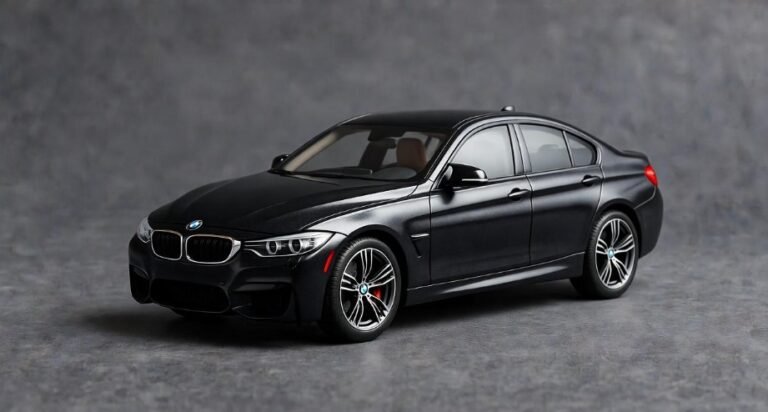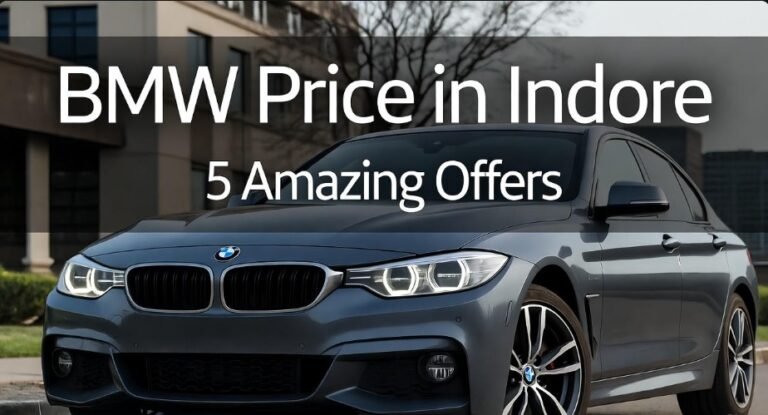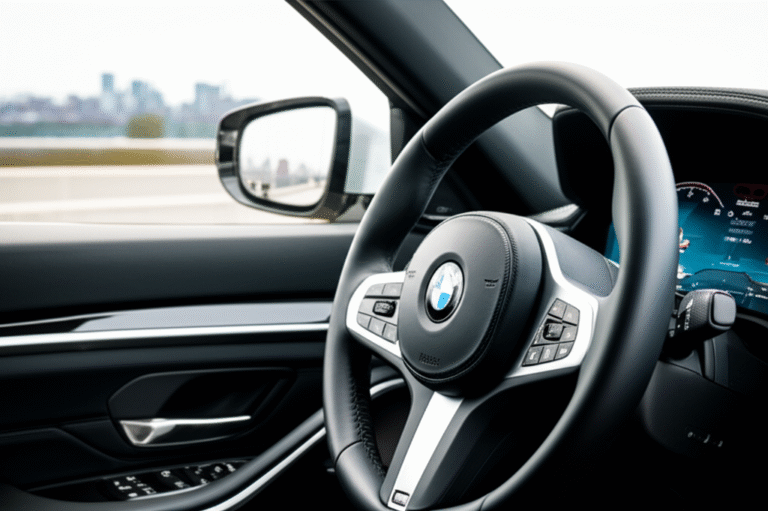BMW White Car Price: 7 Stunning Insights Revealed
The BMW white car price can vary significantly, but understanding key factors like model, trim, options, and market trends will help you secure the best value. This guide reveals seven stunning insights to navigate your purchase confidently.
Key Takeaways
- Discover average BMW white car price ranges.
- Identify models with the best white paint value.
- Learn how options impact BMW white car price.
- Understand depreciation trends for white BMWs.
- Explore financing and insurance costs for white BMWs.
- Find tips for negotiating your BMW white car price.
- Assess the resale value of white BMWs.
Navigating the BMW White Car Price: Your Ultimate Guide
Dreaming of that sleek BMW in pristine white? You’re not alone; white is a perennial favorite for its timeless elegance and sophisticated look on luxury vehicles. However, when it comes to the BMW white car price, things can get a bit nuanced. Many factors influence how much you’ll pay, from the specific model you choose to the endless list of optional extras. It’s easy to feel overwhelmed by all the choices and pricing tiers. This guide is designed to demystify the BMW white car price for you, breaking down the key elements that determine its final sticker cost. We’ll walk you through everything you need to know, making your journey to owning a white BMW smoother and more informed.
Ready to uncover the secrets behind the BMW white car price and make a smart decision? Let’s dive in.
Insight 1: Understanding the Base Price vs. the Final BMW White Car Price
When you first look at a BMW model, the advertised price is usually the base MSRP (Manufacturer’s Suggested Retail Price). This is the starting point, representing the vehicle with its standard features, engine, and a specific paint color, often a no-cost option. However, for a BMW white car price, this initial figure is rarely what you’ll end up paying. White is often a standard, no-additional-charge color for many BMW models, which is excellent news. But this base price doesn’t include essential components that dramatically affect the final BMW white car price.
Think of it like buying a designer suit. The listed price might be for the jacket and trousers alone. To complete the look, you’ll need a shirt, tie, and perhaps some accessories, each adding to the overall cost. Similarly, a BMW’s base price is just the foundation. Additional packages, individual options, higher trim levels, and destination fees are what build up the final BMW white car price. For instance, a popular BMW 3 Series sedan might start with a base MSRP of around $42,000, but with popular options like the Premium Package, M Sport Package, and advanced driver-assistance systems, that price can quickly climb to $50,000 or more. The white paint itself usually doesn’t add to the BMW white car price, but the choices you make around it certainly do.
Insight 2: How Model and Trim Level Impact the BMW White Car Price
The most significant determinant of the BMW white car price is, naturally, the model and its specific trim level. BMW offers a diverse range of vehicles, from the agile 2 Series coupe to the robust X7 SUV, and each has its own pricing structure. Within each model line, different trim levels offer varying levels of performance, luxury, and technology, directly influencing the BMW white car price.
For example, a BMW 2 Series Coupe in white will have a substantially lower base price than a BMW 8 Series Gran Coupe in white. Let’s break it down with some approximate base MSRP ranges for popular models, keeping in mind that white is typically a no-cost option in these examples:
| BMW Model | Approximate Base MSRP (USD) | Typical White Paint Cost |
|---|---|---|
| BMW 2 Series Coupe | $40,000 – $50,000 | Standard (No Cost) |
| BMW 3 Series Sedan | $42,000 – $55,000 | Standard (No Cost) |
| BMW 4 Series Gran Coupe | $48,000 – $65,000 | Standard (No Cost) |
| BMW X3 SUV | $47,000 – $60,000 | Standard (No Cost) |
| BMW X5 SUV | $65,000 – $85,000 | Standard (No Cost) |
| BMW 7 Series Sedan | $95,000 – $120,000+ | Standard (No Cost) |
As you can see, the model choice alone creates vast differences in the BMW white car price. Beyond the model, trim levels play a crucial role. For instance, a standard BMW 330i will be more affordable than a performance-oriented M340i xDrive, even if both are in white. The M models, often featuring more powerful engines, sportier suspension, and aggressive styling, naturally command a higher BMW white car price.
Insight 3: The Premium Paint Palette: Special Whites and Their Cost
While most standard white paints are included in the base BMW white car price, BMW offers more exclusive, premium white finishes that can add a significant cost. These aren’t your everyday gloss whites. We’re talking about metallic whites, pearl whites, and even custom-order BMW Individual paints that offer unique depth, shimmer, and character.
For example, BMW’s Alpine White is a classic, solid finish that’s typically a no-cost option. However, shades like Mineral White Metallic or Glacier White Metallic often come with an additional charge, usually ranging from $550 to $1,500. These metallic finishes contain fine metallic particles that catch the light, giving the paint a more dynamic and luxurious sheen. The higher the cost of the paint finish, the more it will contribute to the overall BMW white car price.
Going even further, the BMW Individual program allows for virtually unlimited customization, including unique paint colors. If you opt for a special Individual white finish—perhaps one that mimics brushed aluminum or has a satin sheen—the cost can easily climb to $5,000 or more. This is where the “white car price” can diverge dramatically from the standard expectation. Always check the options list for specific paint charges, as these premium finishes are a direct addition to the BMW white car price.
Insight 4: Options and Packages: The Multiplier Effect on BMW White Car Price
This is where the BMW white car price truly starts to escalate beyond the base figure. BMW is renowned for its extensive list of optional features and meticulously curated option packages. These are designed to enhance performance, comfort, technology, and safety. While they significantly improve the driving experience, they also act as multipliers on the initial BMW white car price.
Consider these common examples:
-
Performance Enhancements:
Upgraded engines (e.g., moving from a 4-cylinder to a 6-cylinder), M Sport suspension, adaptive M suspension, or performance exhaust systems can add thousands to the BMW white car price.
-
Technology and Infotainment:
The latest iDrive infotainment system, premium Harman Kardon or Bowers & Wilkins sound systems, Head-Up Display, and advanced navigation can easily add $2,000 to $5,000+.
-
Comfort and Convenience:
Heated and ventilated seats, panoramic sunroofs, soft-close doors, power-adjustable steering columns, and advanced climate control systems contribute to the final BMW white car price.
-
Driver Assistance Systems:
Adaptive Cruise Control with Stop & Go function, Lane Keeping Assist, Blind Spot Monitoring, Parking Assistant Plus, and night vision systems are highly desirable but come with a premium cost, often bundled in expensive packages.
-
Aesthetic Upgrades:
Larger alloy wheels, premium interior trims (like carbon fiber or fine wood), ambient lighting packages, and exterior M Sport or Shadowline trims also incrementally increase the BMW white car price.
BMW often groups these options into packages (e.g., Premium Package, Driving Assistance Professional Package, M Sport Package) to streamline choices and offer a slight discount compared to selecting each option individually. However, these packages themselves can cost several thousand dollars each, pushing the BMW white car price significantly higher. A well-equipped white BMW X5, for instance, can easily exceed $90,000, even if the base model starts much lower.
Insight 5: The Role of Market Demand and Availability in BMW White Car Price
Like any luxury good, the BMW white car price is influenced by market dynamics – namely, demand and availability. White remains one of the most popular colors for luxury cars globally, including here in the USA. This consistent demand can keep the price of white BMWs firm, both for new purchases and on the used market.
Certain popular models, especially when painted in desirable white hues, might experience higher demand. If a particular white BMW model or configuration is scarce due to production constraints or overwhelming popularity, dealers may have less incentive to offer significant discounts. In such scenarios, the BMW white car price might hover closer to the MSRP, or even command a slight premium in some rare cases. Conversely, if a specific white BMW variant is not selling as quickly, or if there’s an oversupply, you might find more room for negotiation. For the latest models and highly sought-after configurations, especially those with premium white paints, expect the BMW white car price to reflect strong market interest.
Consider the resale market as well. A white BMW often holds its value well because it appeals to a broad range of buyers. This strong residual value can indirectly influence the initial BMW white car price, as manufacturers and dealers understand its enduring appeal. For more information on current market trends and pricing in the USA, resources like Kelley Blue Book (KBB) or Edmunds can provide valuable insights into new and used car values.
Insight 6: Financing, Insurance, and Maintenance: Hidden Costs Beyond the BMW White Car Price
While we focus on the sticker price, the true cost of owning a white BMW extends beyond the initial BMW white car price. Financing, insurance, and ongoing maintenance are critical considerations that affect your budget.
Financing:
The BMW white car price you agree upon will be the basis for your loan or lease. Higher prices mean higher monthly payments and potentially more interest paid over the life of the loan. Securing pre-approved financing from your bank or credit union before visiting the dealership can give you a strong benchmark for interest rates and potentially allow you to negotiate better terms with BMW Financial Services or the dealership’s finance department.
A valuable resource for understanding financing options in the USA is the Consumer Financial Protection Bureau (CFPB), which offers guidance on auto loans and leases. Visit consumerfinance.gov/consumer-tools/auto-loans/ for more information.
Insurance:
BMW vehicles are considered luxury cars and often come with higher insurance premiums compared to non-luxury brands. The specific BMW white car price, chosen options, engine size, and your driving record all play a role in determining your insurance rate. Comprehensive coverage for a white BMW might be more expensive than for a darker-colored model, though the difference is usually marginal. Always get insurance quotes before finalizing your purchase to avoid surprises.
The National Association of Insurance Commissioners (NAIC) offers resources to understand auto insurance in the USA: content.naic.org/consumer_auto.htm
Maintenance:
BMW vehicles are known for their advanced engineering and performance, but this can translate to higher maintenance and repair costs. Routine maintenance, such as oil changes, brake services, and tire rotations, will be more expensive than on a standard sedan. Specialized repairs or replacement parts for high-performance BMWs can be particularly costly. While BMW offers maintenance plans, factor these potential long-term costs into your overall ownership budget, not just the initial BMW white car price.
These “hidden” costs are essential for a realistic understanding of the total BMW white car price and its long-term financial commitment.
Insight 7: Resale Value: The Enduring Appeal of a White BMW
One of the most compelling insights regarding the BMW white car price is its strong resale value. White is a universally appealing color, making white BMWs highly desirable on the used car market. This demand helps maintain their value over time, meaning you might recoup a larger portion of your initial investment when it’s time to sell or trade in.
Unlike some trendier or more polarizing colors that can significantly depreciate a vehicle’s value, white typically holds its ground. This is particularly true for classic BMW models and popular SUVs like the X3 and X5. When comparing two identical BMWs, one in white and one in a less popular color, the white one is often easier to sell and may command a higher price. This robust resale performance can soften the blow of initial depreciation, making the overall cost of ownership, relative to the initial BMW white car price, more favorable.
According to data from automotive valuation experts, white, black, and silver are consistently among the top colors for retaining value in the luxury segment. This enduring appeal is a significant factor that contributes to the long-term desirability and financial sense of investing in a white BMW. Therefore, while the initial BMW white car price might be high, its strong residual value is a key benefit.
Pro Tip:
When considering a white BMW, always check for paint condition during inspections. While white is forgiving, swirl marks and minor scratches can be more visible than on darker colors. A ceramic coating can help protect the paint and maintain that pristine look, potentially adding long-term value.
Frequently Asked Questions (FAQs) About BMW White Car Price
Q1: Is white a standard, no-cost color for most BMWs?
Yes, for most BMW models, classic white finishes like Alpine White are standard and come at no additional cost. However, premium white metallic or pearl finishes, or any color from the BMW Individual program, will incur an extra charge, increasing the BMW white car price.
Q2: What is the average BMW white car price for a new 3 Series?
A new BMW 3 Series sedan in white, with a common trim like the 330i and a few popular options, might range from $45,000 to $55,000. However, adding M Sport packages and advanced tech can push this figure higher.
Q3: Do white cars depreciate slower than other colors?
Generally, yes. White is a universally popular color for cars, especially luxury vehicles like BMWs. This consistent demand often translates to a slower depreciation rate compared to more niche or less popular colors, helping to preserve the resale value of your white BMW.
Q4: Are BMW white cars more expensive to insure?
The color of a car has a minimal impact on insurance premiums. The primary factors are the car’s overall value (the BMW white car price), its safety ratings, engine size, and your driving history. While a very expensive custom white paint might slightly influence the car’s value, the color itself isn’t a major driver of insurance costs.
Q5: Should I consider a certified pre-owned (CPO) white BMW?
Absolutely. A certified pre-owned white BMW can offer significant savings compared to a new one. CPO vehicles undergo rigorous inspections, come with extended warranties, and are often in excellent condition, providing peace of mind while offering a lower entry point to the BMW ownership experience and a potentially better overall BMW white car price.
Q6: What are the most popular white BMW models in the USA?
The most popular white BMW models in the USA typically include SUVs like the X3 and X5, and sedans like the 3 Series and 5 Series. These models appeal to a broad audience, and white is a classic, sophisticated choice for them.
Q7: How can I negotiate the BMW white car price?
To negotiate the BMW white car price effectively, research the invoice price and current market value, compare offers from multiple dealerships, consider a lightly-used or CPO vehicle, and be prepared to walk away if the deal isn’t right. Understanding the true cost of your desired options and packages is also crucial for informed negotiation.
Conclusion
Understanding the BMW white car price involves looking beyond the simple color choice. It’s a blend of the specific model, chosen trim, premium options, market demand, and even the long-term cost of ownership. While standard white paints often don’t add to the sticker price, the journey from a base model to your dream white BMW can be a significant one. By arming yourself with insights into how each factor influences the final BMW white car price, you’re well-equipped to make an informed decision and drive away in your perfect white BMW with confidence. Remember to consider financing, insurance, and resale value for a complete picture of your investment.



